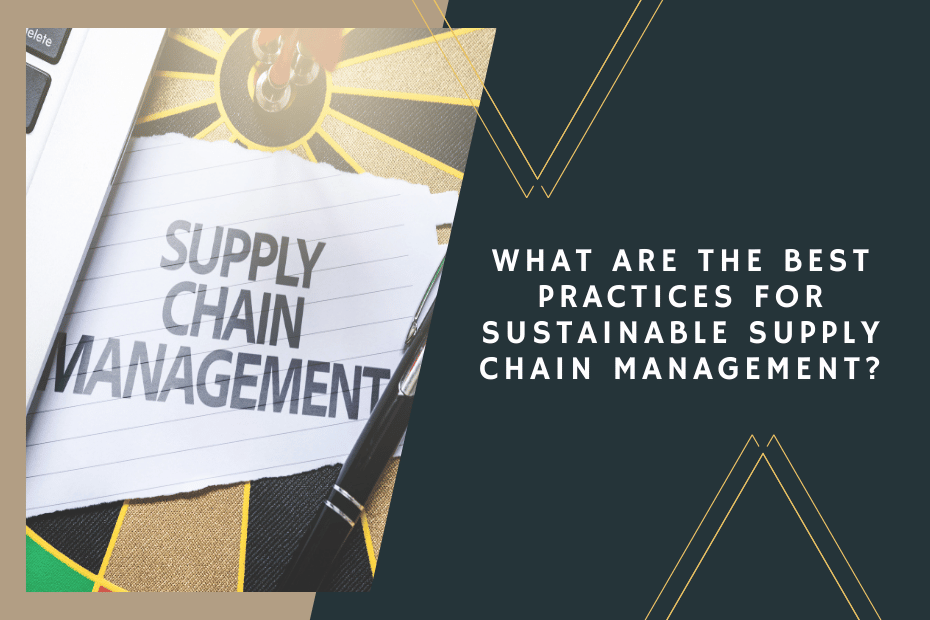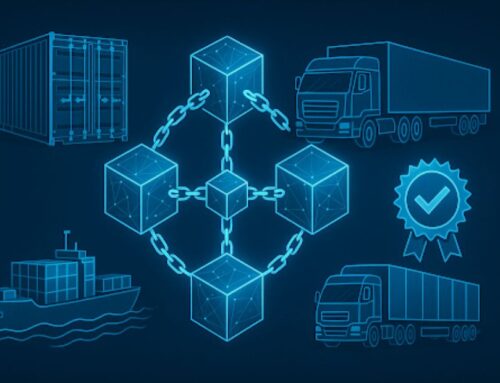Sustainable supply chain management has become a crucial aspect for businesses striving to reduce their environmental impact, improve social responsibility, and enhance economic performance. As global awareness of environmental issues and ethical practices increases, companies are pressured to adopt sustainable practices throughout their supply chains. This article explores the best practices for achieving sustainable supply chain management, providing actionable insights and strategies for businesses to implement. By integrating these practices, companies can achieve a balance between profitability, environmental stewardship, and social responsibility, leading to long-term resilience and improved brand reputation.
Ethical and Sustainable Sourcing
Ethical and sustainable sourcing involves procuring materials and products in a way that considers environmental and social impacts. This practice includes ensuring that suppliers adhere to fair labor practices, respect human rights, and minimize environmental harm. Companies can adopt certifications such as Fair Trade and Forest Stewardship Council (FSC) to verify the sustainability of their sources. Additionally, local sourcing initiatives can reduce transportation emissions, support local economies, and enhance supply chain resilience. By prioritizing suppliers that share their sustainability values, businesses can promote responsible practices throughout their supply chains and contribute to a more sustainable global economy. Engaging suppliers in sustainability goals can lead to improvements in working conditions and environmental standards, creating a positive impact beyond the immediate business context.
Green Logistics and Transportation
Green logistics focuses on minimizing the environmental impact of transportation and distribution activities. Companies can optimize transportation routes, consolidate shipments, and adopt fuel-efficient vehicles to reduce greenhouse gas emissions. The use of alternative fuel technologies, such as electric and hybrid vehicles, further contributes to reducing the carbon footprint. Collaborative transportation initiatives, where companies share transportation resources, can enhance efficiency and reduce costs and emissions. Implementing green logistics not only helps the environment but also improves operational efficiency and can lead to significant cost savings over time. For example, companies can reduce idle times and improve route planning using AI and machine learning algorithms to optimize delivery schedules and routes, leading to reduced fuel consumption and emissions.
Waste Reduction and Recycling
Reducing waste and promoting recycling within the supply chain are critical components of sustainable supply chain management. Conducting waste audits helps identify areas where waste can be minimized. Companies can adopt circular economy principles, focusing on reducing, reusing, and recycling materials to maximize resource efficiency. Partnering with suppliers to implement waste reduction and recycling initiatives fosters a culture of sustainability throughout the supply chain. This approach not only reduces the environmental impact but also can lead to cost savings by minimizing waste disposal expenses and reducing the need for raw materials. For instance, companies can implement closed-loop systems where materials are continuously reused, significantly reducing the need for new raw materials and minimizing waste.
Energy Efficiency and Renewable Energy
Improving energy efficiency and investing in renewable energy sources are essential strategies for reducing the carbon footprint of supply chain operations. Conducting energy audits can identify opportunities to enhance energy efficiency in manufacturing, transportation, and warehousing. Companies can invest in renewable energy sources such as solar and wind power to supply their energy needs. Adopting low-carbon technologies and optimizing energy use in operations contribute to supply chain decarbonization. These initiatives not only reduce greenhouse gas emissions but also often result in long-term cost savings and energy security. For example, installing solar panels on warehouse roofs can provide a significant portion of the energy needed for operations, reducing reliance on non-renewable energy sources and lowering energy costs.
Transparency and Traceability
Transparency and traceability in the supply chain allow companies to monitor and manage their sustainability performance effectively. Implementing traceability systems helps track products from raw materials to final delivery, ensuring accountability and compliance with sustainability standards. Blockchain technology can enhance transparency by providing a secure and immutable record of transactions, making it easier to verify sustainable sourcing and ethical practices. Communicating sustainability efforts and progress to stakeholders, including customers, investors, and regulatory bodies, builds trust and reinforces the company’s commitment to sustainability. Transparency also involves reporting on sustainability metrics and performance, allowing stakeholders to see the tangible results of the company’s efforts and holding the company accountable to its sustainability goals.
Collaboration and Partnerships
Collaboration with suppliers, industry peers, and other stakeholders is crucial for achieving sustainability goals. Establishing supplier collaboration programs can increase transparency, mitigate risks, and drive innovation. Cross-sector partnerships with NGOs, government agencies, and industry initiatives can address sustainability challenges collectively. For example, the Sustainable Apparel Coalition and the Consumer Goods Forum are industry alliances that promote sustainable practices across supply chains. Collaborative efforts enable the sharing of best practices, resources, and knowledge, leading to more effective and scalable sustainability initiatives. By working together, companies can leverage each other’s strengths and expertise to tackle complex sustainability challenges more efficiently and effectively.
Continuous Improvement and Innovation
Sustainability is an ongoing process that requires continuous improvement and innovation. Companies should adopt principles of continuous improvement, such as Kaizen and Lean, to drive efficiency and innovation in their supply chain operations. Encouraging a culture of innovation involves incentivizing new ideas, fostering cross-functional collaboration, and partnering with startups and technology providers. Piloting and testing new technologies and processes before scaling them across the supply chain can minimize risks and maximize the impact of sustainability initiatives. Monitoring and evaluating sustainability performance through key performance indicators (KPIs) and data analytics help identify areas for improvement and ensure that sustainability goals are met. Continuous improvement also involves staying informed about new developments in sustainability practices and technologies, ensuring that the company remains at the forefront of sustainable supply chain management.
In Conclusion
Implementing sustainable supply chain management practices is essential for businesses to reduce their environmental impact, improve social responsibility, and achieve long-term economic benefits. By adopting ethical sourcing, green logistics, waste reduction, energy efficiency, transparency, collaboration, and continuous improvement, companies can build more resilient and sustainable supply chains. These practices not only enhance brand reputation and regulatory compliance but also contribute to the overall sustainability goals of reducing greenhouse gas emissions, conserving resources, and promoting ethical labor practices. As global challenges evolve, staying committed to sustainable practices will be crucial for businesses to thrive in the future. Embracing these best practices will not only drive sustainability but also position companies as leaders in responsible business operations, fostering trust and loyalty among customers, investors, and other stakeholders.









